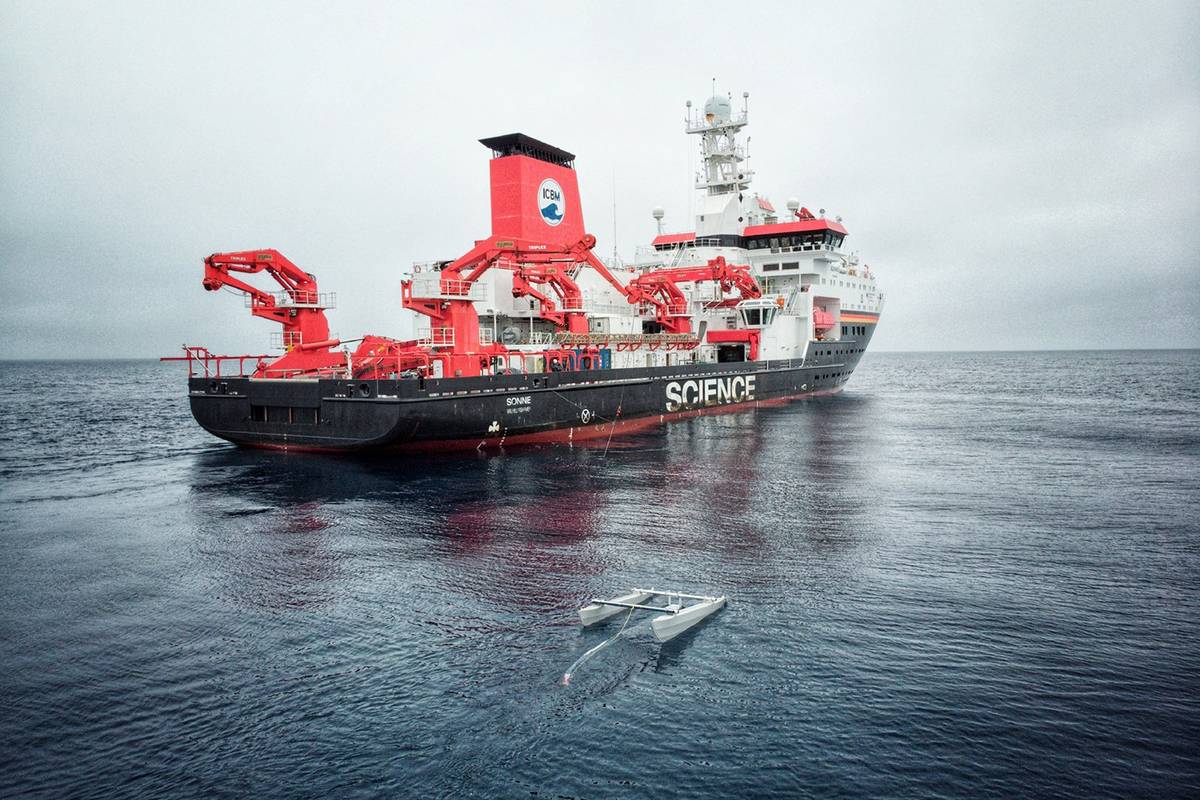In a recent study, a research team from the Helmholtz Centre for Environmental Research (UFZ), in collaboration with the Alfred Wegener Institute Helmholtz Centre for Polar and Marine Research (AWI), has found large quantities of plastic waste and microplastics in a remote marine protected area in the Pacific Ocean. These quantities were similar to those found in one of the world’s largest known garbage patches. The researchers highlight that plastics are distributed much more widely than expected. The entire ocean ecosystem is threatened. They therefore call for the global emissions of plastics into the ocean to be stopped as quickly as possible. The study has been published in Environmental Science & Technology.
"Plastics in the ocean are a serious problem. Every year, millions of tonnes of plastics end up in the ocean via rivers and wind as well as from shipping and fishing - and it remains there. It is still difficult to assess the consequences for the ocean ecosystem", says UFZ environmental chemist Prof Annika Jahnke, coordinator of the MICRO-FATE project, which made the study possible. What is the distribution of plastics in the oceans? Which areas are particularly affected? Are there any plastic-free zones? And what properties do plastics have close to the source or far away in the open ocean? Jahnke and her research team have investigated these questions. During a five-week expedition on the German research vessel "Sonne" in 2019, the researchers took samples of the surface water in the North Pacific Ocean between Vancouver (Canada) and Singapore. The team selected the sampling stations along the cruise track based on a prediction model from the University of Hawaii (Surface CUrrents from a Diagnostic model (SCUD)). This model calculates how much plastics are likely to be present in a particular marine area. "We selected stations with predicted high and low plastic loads for our investigations", says Jahnke. "Some stations were located in areas that had already been well researched such as the so-called Great Pacific Garbage Patch. We also wanted to investigate zones in the open ocean that had hardly been explored. For example, we took samples in a marine reserve northwest of Hawaii, the Papah?naumoku?kea Marine National Monument".
The team used two different methods to determine the amount of plastics in the surface water. The first one was a litter survey in which teams of two scientists on the deck of the "Sonne" counted plastic items that were visible to the naked eye during ship transits and documented their shape and size. The second one involved neuston nets towed at the surface to take samples at nine stations. "The mesh size was 0.3 millimetres. This allowed us to collect not only larger items, but also small plastic particles to determine the amount of microplastics, which are less than five millimetres in diameter", says UFZ researcher Robby Rynek, lead author of the study. "The plastic particles from each sample were sorted by size and counted. We then used a special form of infrared spectroscopy to chemically analyse the particles and estimate their weathering state based on their appearance".
The longer plastics are exposed to sun, wind, waves, and sea water, the more they weather and disintegrate. Other studies have shown that larger non-degraded plastic items and particles occur primarily where plastic enters the sea. The further the particles are transported, the more weathered and smaller they should be. "This is exactly what we showed with our investigations. And as expected, we found the highest quantities of plastics in the samples we took in the area known as the Great Pacific Garbage Patch", says Rynek. "However, the items do not in any way form a carpet of plastic that covers an entire surface in a dense manner. This is important when thinking about plastic removal technologies, which would have to cover vast areas in order to be able to collect significant amounts of plastic. Most plastics are small fragments that escape nets or which can only be collected with considerable animal 'by-catch’," says co-author Dr Melanie Bergmann from the AWI. It is therefore essential to reduce the emissions of plastics.
"The most surprising and at the same time most worrying result of our study is that we found equally large quantities of particularly small microplastics in the remote marine protected area north-west of Hawaii. We hadn’t expected that. According to the calculations of the forecast model, there should be considerably less plastics in this area", says Rynek. "Microplastics are most likely distributed much further across the oceans than previously assumed. We actually found plastics at all of our sampling stations. There were no samples without plastics. So, we can’t assume that plastics are causing problems mainly in the known accumulation areas - the problem is much bigger and actually affects the entire ocean ecosystem", says Jahnke.
This year, UN member states intend to adopt a legally binding global Plastics Treaty in order to stop plastic pollution into the ocean. "As independent scientists, we stand as part of the Scientists’ Coalition for an Effective Plastics Treaty to advise the delegates of the UN member states", says Bergmann. In addition to far-reaching reductions in plastic production by avoiding unnecessary plastic products and promoting reuse systems, many researchers believe that the chemical composition of plastic products needs to be simplified and improved. This is the only way to ensure safe reuse and higher recycling rates.
Publication:
Robby Rynek, Mine B. Tekman, Christoph Rummel, Melanie Bergmann, Stephan Wagner, Annika Jahnke and Thorsten Reemtsma: Hotspots of Floating Plastic Particles across the North Pacific Ocean. Environmental Science & Technology; https://doi.org/10.1021/acs.est.3c05039
Further information
Dr. Melanie Bergmann
Alfred Wegener Institute, Helmholtz Centre for Polar and Marine Research (AWI)
melanie.bergmann@awi.de
Robby Rynek
UFZ Department of Monitoring and Exploration Technologies
robby.rynek@ufz.de
Prof. Dr. Annika Jahnke
Head of the UFZ Department of Exposure Science
annika.jahnke@ufz.de
